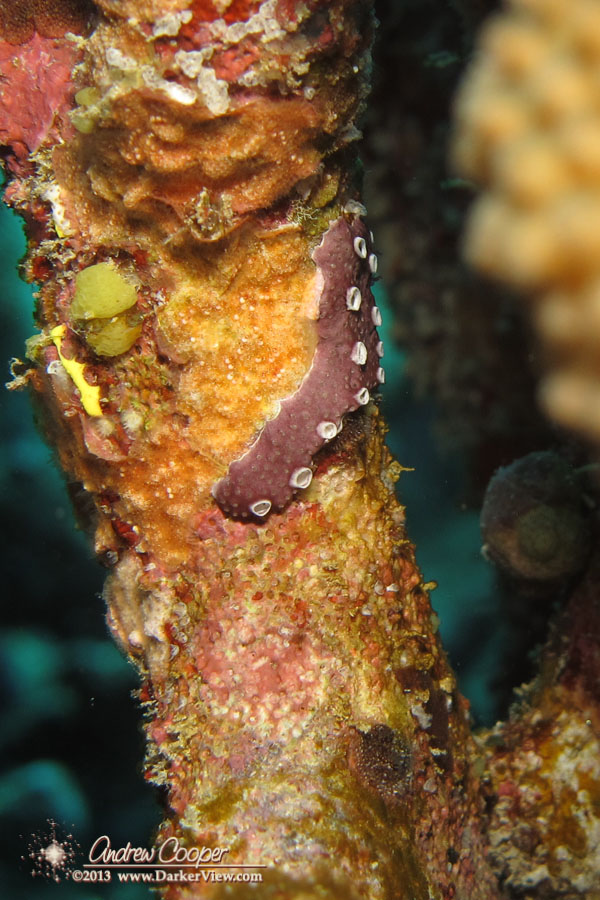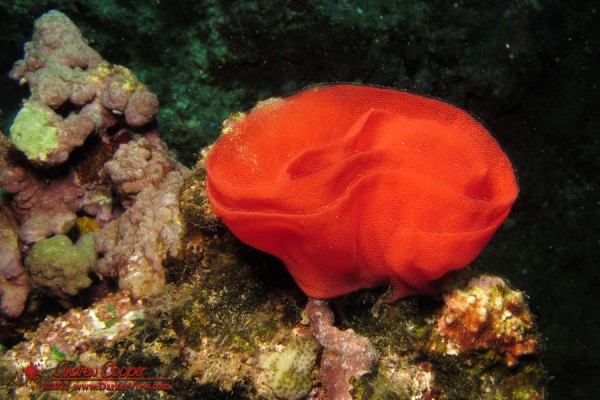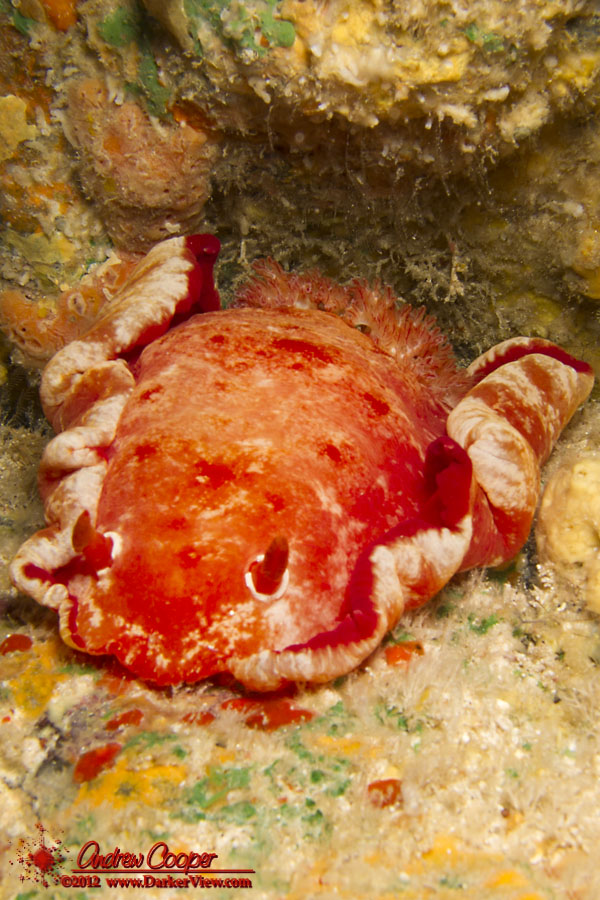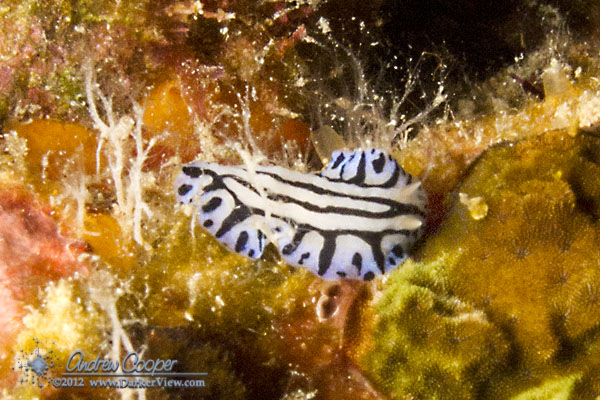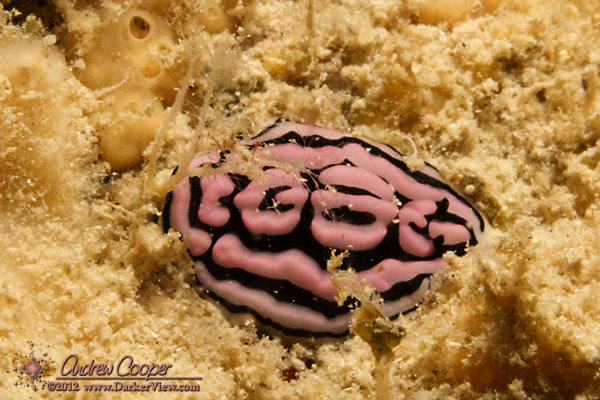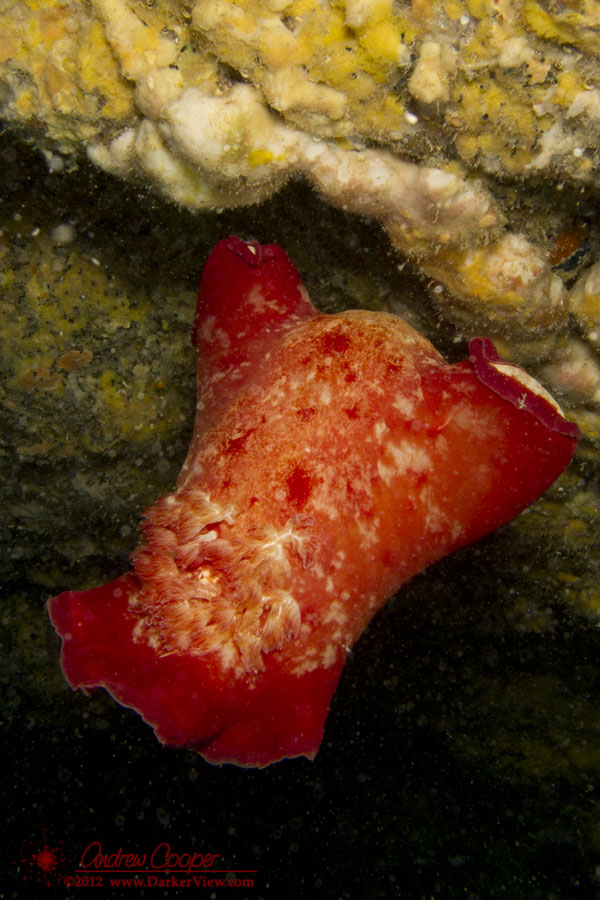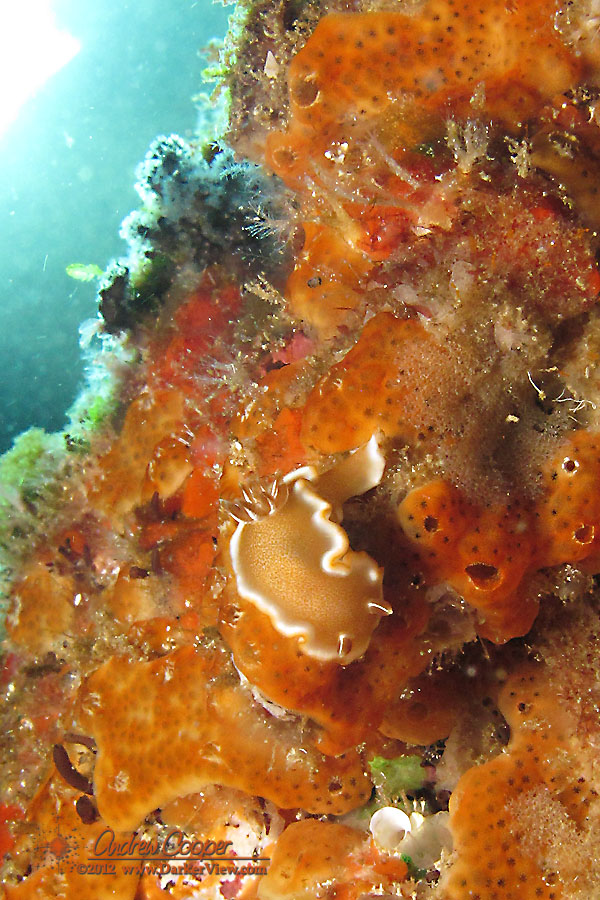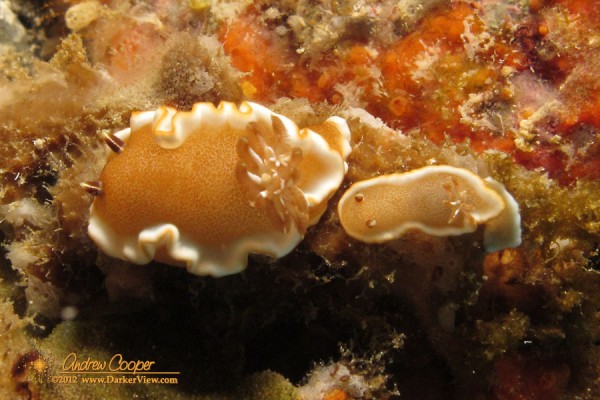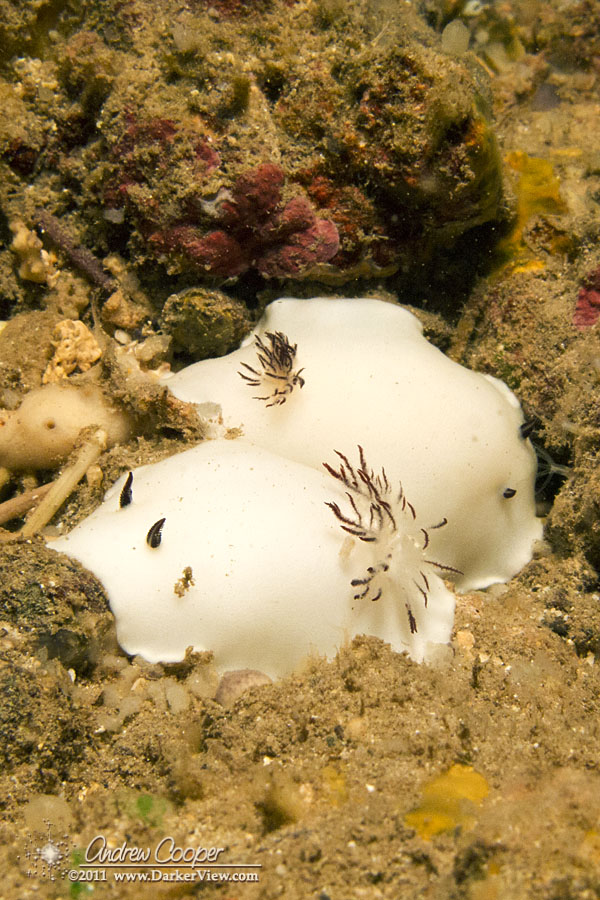Two dives, almost two hours underwater, much of that time spent combing the reef face and cave walls for small invertebrates to photograph. I was well into my second dive of the day, a nice cave called Henry’s, where I had now spent over forty minutes carefully searching the interior and entrance areas of the lava tube. My real target is nudibranchs, but so far the day’s diving had revealed only two, both species I had found and photographed many times before.
A splash of color at the base of a large antler coral got my attention, it was shaped just right, but I was not in a position to see it clearly. Getting closer it looked better, about the right size with white raised features. It was only after circling to the other side of the coral and getting in close that I saw that this was probably not a nudi. It took a moment to realize that this was probably a dark purple sponge with bright white osculum. Even in the photo you have to look close to realize what it is.
Except in a few obvious cases, I make no real effort to properly identify sponges. This is a task that takes an expert, a collected specimen and a proper lab to do. I did check briefly through the book to see if there was a clear match, but as I expected, this sponge will remain identified simply as… a sponge.
